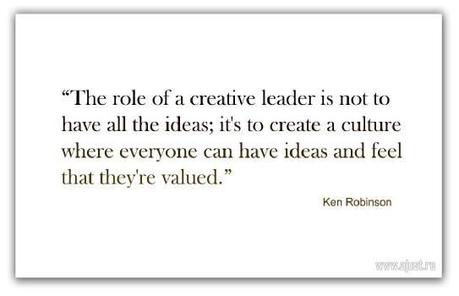 ***
***
Last week, Dr. Leeanne Bell McManus, Chip Rouse, and I gave a three-hour presentation to an organization entitled, “Event Planning: A Seminar in Communication.” Centered around ideas from our textbook, Event Planning: Communicating Theory & Practice, we talked about communication theory, ideas, tips and case studies, and offered strategies for leaders in event planning.
Additionally, one of the aspects we talked about was creativity, and our textbook includes a chapter dedicated to leadership. I like to talk about the combination of the two: creativity & leadership.
One of my favorite articles I’ve read to date on this topic is from the Harvard Business Review and it’s entitled Creativity and the Role of Leader. It’s a terrific piece that examines leadership in creative roles, such as those at Google, IDEO, and XM and Sirius. If we can take away one thing from this article, it’s that creative leadership requires you to be a visionary.

After researching and reading about this topic for years, as well as presenting on the topic at conferences, I’d like to offer my take on creative leadership, for I believe it is the cornerstone of any successful organization or endeavor. I also come to the table a bit biased and in favor of creativity, as I have the privilege of working in two fields I believe offer tremendous opportunity to unleash your creativity—that of teaching and fictional writing.
That said, I believe creative leadership requires those in power to possess these types of characteristics.

1. Creative leaders have open minds.
They are open to ideas and suggestions. They understand that the people they have hired or are working on their organization’s behalf are good at what they do and believe in the organization’s mission. Rarely is one person the innovator; it take a couple or more visionaries to make things go—just look at the early days of Apple. Creative leaders are able to examine a variety of ideas and appreciate the dedication that has been put forth by individuals and teams, and they always stay open to newer and better suggestions.
2. Creative leaders are not afraid to change and break habits.
In order for any organization or business to thrive, creative leaders must welcome change and not get bogged down by habits. In an event planning business, can you imagine if the leaders did not commit to this type of excellence? Events would be the same, and events of distinction would never be created. However, change for the sake of change is rarely a good idea unless it is grounded, researched, substantiated, warranted and undeniably necessary. Remember when they had to bring former CEO Howard Schultz back to his original role at Starbucks because things got out of hand?

3. Creative leaders value their teams.
Rarely will you come across satisfied and passionate employees whereby there is no creative leadership. The stifling of creativity can prove deadly when individuals are stripped of creative measures. Workers and creative teams must be allowed to do their jobs to the best of their abilities, and removing aspects of creativity could lead to decreased motivation. Teams need to feel that their contributions to the organization’s success are vital to the organization’s continued growth, and that their input is valued.
4. Creative leaders are motivators—and it’s a team effort.
I recently watched a “60-Minutes” piece on my former O’s colleague and friend, Theo Epstein, the current GM of the Chicago Cubs and former GM of the Boston Red Sox, who broke the curse of the Bambino. In that piece, Theo talked about how he builds his team and how important the cumulative sense of the team’s character is to the team’s success. That sense of choosing the right people leads to motivation that is unsurpassed, as was witnessed by the Cubs winning the World Series in 2016. Theo’s energy spills over into all those involved in the team, and as he states, no one person is solely responsible for the success. Perhaps that is why Fortune magazine chose Theo Epstein as its #1 World Leader in the March 2017 issue. I’m proud to know him. There is no denying that team spirit has the power to win it all, as has been proven time and time again in athletics. That same energy works in organizations, as well.

5. Creative leaders are constantly looking to the future for the next story.
Creative leaders can’t stay in the moment for too long—they are always looking to the future for the next project, idea, or task that will prove meaningful. There’s always another story to tell, if you will, and they are ready to move on to creating something even more meaningful than the last project. If they sit still for too long, they get itchy. Creative leadership means forging ahead with the next plan, because they know what it means to build on success.


